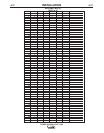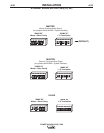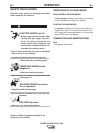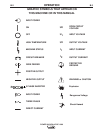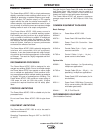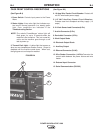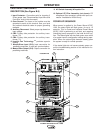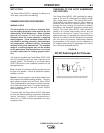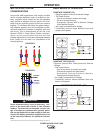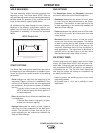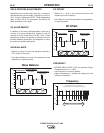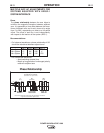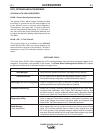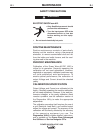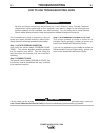
B-7
OPERATION
B-7
DUTY CYCLE
The Power Wave AC/DC is capable of welding at a
100% duty cycle (continuous welding).
COMMON WELDING PROCEDURES
MAKING A WELD
The serviceability of a product or structure utiliz-
ing the welding programs is and must be the sole
responsibility of the builder/user. Many variables
beyond the control of The Lincoln Electric
Company affect the results obtained in applying
these programs. These variables include, but are
not limited to, welding procedure, plate chemistry
and temperature, weldment design, fabrication
methods and service requirements. The available
range of a welding program may not be suitable
for all applications, and the build/user is and must
be solely responsible for welding program selec-
tion.
The steps for operating the Power Wave AC/DC 1000
will vary depending upon the user interface of the
welding system. The flexibility of the Power Wave
AC/DC 1000 lets the user customize operation for the
best performance.
First, consider the desired welding procedures and
the part to be welded. Choose an electrode material,
diameter, and flux.
Second, find the program in the welding software that
best matches the desired welding process. The stan-
dard software shipped with the Power Wave AC/DC
1000 encompasses a wide range of common process-
es and will meet most needs. If a special welding pro-
gram is desired, contact the local Lincoln Electric
sales representative.
To make a weld, the Power Wave AC/DC 1000 needs
to know the desired welding parameters. Waveform
Control Technology ™ allows full customization of
Strike, Run-in, Crater and other parameters for exact-
ing performance.
OVERVIEW OF THE AC/DC SUBMERGED
ARC PROCESS
The Power Wave AC/DC 1000 combines the advan-
tages of AC and DC Submerged Arc Welding (SAW)
into a single power source. The limiting factor of AC-
SAW welding has always been the time it takes to
transition from positive to negative polarity. This lag
through the zero crossing can cause arc instability,
penetration, and deposition problems in certain appli-
cations. The Power Wave AC/DC 1000 utilizes the
speed of an inverter based power source, and the
flexibility of Waveform Control Technology™ to
address this issue. By adjusting the Frequency, Wave
Balance and Offset of the AC waveform the operator
can now control the balance (relationship) between
the penetration of DC positive and the deposition of
DC negative while taking full advantage of the reduc-
tion in arc blow associated with AC.
FIGURE B.1
POWER WAVE® AC/DC 1000
Time
Po
s
iti
v
e
Current
N
ega
t
ive
C
urr
e
nt
Current
Output waveform variations made possible byWaveform Cont
rol T
echnology
Depending on the process, diffe
rent parts of
the outpu
t
wavefo
r
m and wire feed
speed may be modulated at varying rates to achieve a smooth and sta
ble arc.
AC/DC Submerged Arc Process
T
M
F
requen
c
y
P
ulse
W
i
dth
Transi
tion
Rate
d
i/dT



